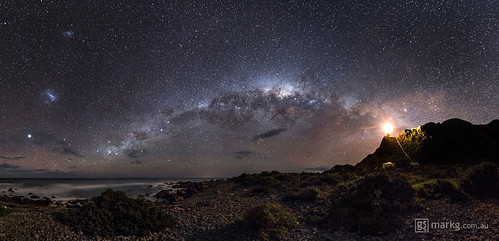Tag archives: astrophotography
Physicists’ pets, seven stars for Bowie, ping-pong in space and more
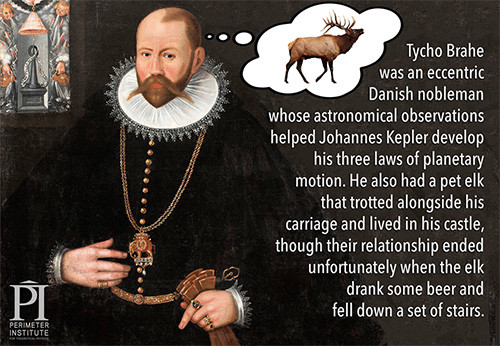
Prancer and the astronomer: Brahe and his pet elk. (Courtesy: Perimeter Institute)
By Tushna Commissariat
Sparks of inspiration come from many sources, but for some of the 20th century’s most well known scientists, their four-legged pets played a key role. From Tesla’s cat “Macak” – his interest in electricity was lit as a child when he noticed sparks generated while he stroked Macak – to Schrödinger’s (real live) dog “Burshie”, these intellectual giants sought the company of pets just as we do and over at the Perimeter Institute’s website, you can learn all about “Great physicists and the pets who inspired them”. My favourite “pet” is of course Tycho Brahe’s infamous elk (you can read about it in the image above). With all of these pets about, its a miracle that a paper wasn’t eaten by a naughty dog or cat!
Blood Moon at night, stargazers’ delight
By Tushna Commissariat
I am rather tired as I type up this post, but I do have an excellent excuse for being so sleepy today as I was awake until the wee hours of the morning watching the “super blood Moon” eclipse. As most of you know, today’s eclipse was particularly impressive as a super Moon (when the Moon is at its closest point to the Earth) coincided with a total lunar eclipse – when the Earth is perfectly in-between the Sun and Moon.
Rather unusually for the UK, we (in and around Bristol, at least) had a crystal-clear night, devoid of any clouds. I set up camp in my backyard, armed with a pair of binoculars, my camera with a zoom lens (but, unfortunately, no tripod) and a hot cup of tea…or two!
Despite the cold bite of an autumn night, the Moon really was a sight to behold. Before the eclipse, the super Moon was so bright that I could hardly look at it through my binoculars.
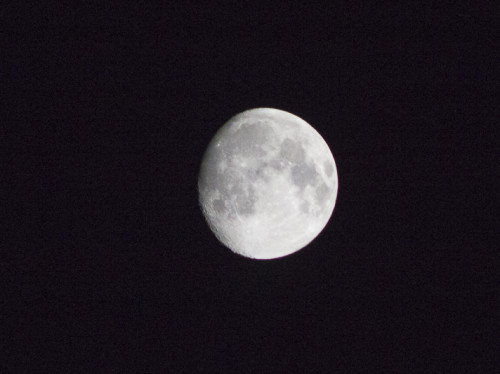
The full “super Moon” at around 10 p.m. BST, a few hours before the eclipse began. (Courtesy: Graeme Watt)
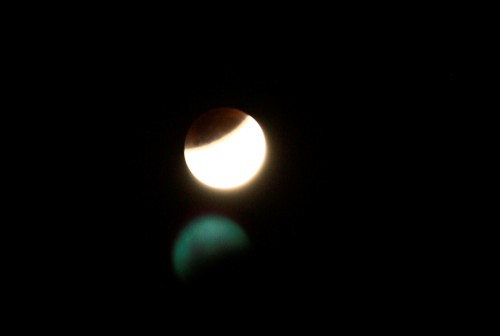
The Moon partially eclipsed, not quite bloody just yet, with a lunar flare. (Courtesy: Tushna Commissariat)
View all posts by this author | View this author's profile
Black-hole Sun, ticking clocks, coffee-stain avalanches and more
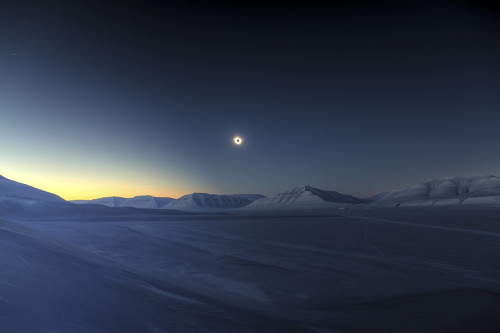
“Eclipse Totality over Sassendalen” by Luc Jamet.
(Courtesy: Luc Jamet/RAS)
By Michael Banks and Tushna Commissariat
It’s that time of the year again when the Royal Observatory Greenwich announces the winners of its Astronomy Photographer of the Year award and releases some of the most wonderful and awe-inspiring celestial images. Pictured above is this year’s overall winning image – titled “Eclipse Totality over Sassendalen” and taken by French photographer Luc Jamet, this stunning skyscape was taken from Svalbard during the total solar eclipse that took place earlier this year. “It is one of those heart-stoppingly beautiful shots for which you feel grateful to the photographer for sharing such an exceptional moment,” says Melanie Vandenbrouck, who was one of the judges. If you are in London, then you can drop in to the observatory to see the full exhibition , which opens today, and you can see all the winning images online.
While you’re admiring pictures, do take a look at the latest images of Pluto – backlit by the Sun and showing off its many rugged mountains and icy planes – taken by the New Horizons probe. The pictures are eerily similar to something you would see at the poles of our very own planet, while still maintaining its alien air.
Bristol marvels at awe-inspiring solar eclipse
By Tushna Commissariat and James Dacey
The south-west of England is not exactly known for its sunny skies at this time of year, so many of us in Bristol – home to Physics World HQ – had steeled ourselves to miss out on today’s solar eclipse, which coincidently is on the first day of spring. So, we were rather overjoyed when the Sun shone through the sparse cloud cover for nearly an hour of the celestial treat. While today’s eclipse was technically visible to anyone in North Africa and Europe, totality was only visible to those lucky few who happened to be on the Faroe Islands (where it was actually cloudy for most of the time) and in Svalbard in northern Norway. Here in Bristol, the eclipse peaked at about 9.30 a.m., when 87% of the Sun’s light was blocked by the Moon.
How the banjo got its twang, love in the time of science, award-winning astro images and more

Five string banjo showing the position of the bridge on the round head. (CC BY-SA 3.0 / DMacks)
By Tushna Commissariat and Hamish Johnston
Folk and country music often blends the sharp twang of a banjo with the mellow and sustained tone of a guitar. While the two instruments appear to be very similar – at least at first glance – they have very different sounds. This has long puzzled some physicists, including Nobel laureate David Politzer, who may have just solved this acoustical mystery.
View all posts by this author | View this author's profile
Lectures with Peter Higgs, award-winning photographs, multidimentional shapes and more
By Tushna Commissariat
Each week, all of us here at Physics World comb the Internet for all things physics – we look at national and local newspapers, university news outlets, a variety of magazines, science websites and blogs, and, of course, all the latest scientific papers. We then pool our research and pick the cream of our crop to report on. But we can’t always cover all the interesting bits of physics news that we have chanced upon and a lot of good stuff is left behind in a red folder. So, starting from today, at the end of each week we’ve decided to point all of you, our eager readers, to the stories that have caught our fancy but not made it to the site yet and leave you with some extra weekend reading from The Red Folder.
Starry Starry Night
By Tushna Commissariat
It is commonly thought that astronomy and astrophotography are rather exclusive hobbies and that you require a lot of specialist equipment and training to pursue them. But an amateur astrophotographer, using only his ordinary digital SLR camera, a tripod and his love for the skies, has won the major astrophotography prize at the inaugural STARMUS festival.
Not only did Alex Cherney win the opportunity to attend and mingle with the who’s who of astronomy at the STARMUS festival – an astronomy and space-science festival held in the Canary Islands this June – but the Australian amateur astronomer also won an hour using one of the largest optical telescope on the planet – the 10.4 m Gran Telescopio Canarias (GranTeCan), in the Canary Islands in Spain.
Cherney’s prize-winning collection of time-lapse sequences of the Milky Way, seen over the Southern Ocean, beat a bevy of global participants for the best entry as judges felt his scenes were “chosen with the eye of an artist” and that his “subtle panning and excellent control of colour and contrast revealed technical skills of the highest order”. Cherney uses only his Nikon D700 DSLR camera and produced a compilation of images taken over 31 hours of exposure time.
This is notably the first time an amateur astronomer has been allowed access to the GranTeCan and Cherney was keen to make the most of the opportunity. After much deliberation, he decided to use his hour to observe and photograph Arp84, a pair of interacting galaxies – NGC5394 and NGC5395. (Image above courtesy: Alex Cherney)
“I wanted an object that would look nice given the parameters of the telescope and has not been photographed in colour and great detail by a professional telescope,” he said. Noel Carboni, an astro-image-processing expert, met Cherney at the festival and helped to produce a colour image. Carboni feels this is the clearest image of Arp84 ever made. Cherney felt the experience of using the telescope was “incredible”, akin to taking a space flight. “It is very hard to describe what it is like to observe space with an instrument that is helping scientists seek answers to the origin of the universe.”
Cherney put his opportunity of being at the La Palma observatory to good use, producing another time-lapse video featuring GranTeCan and MAGIC (Major Atmospheric Gamma-ray Imaging Cherenkov Telescopes) as the backdrop for the night skies. Take a look at the stunning video below.
Outer Space from Alex Cherney on Vimeo.
View all posts by this author | View this author's profile
